When summer comes around in Japan, you’ll often spot small, delicate bells hanging from the eaves of traditional houses. These charming decorations are called Japanese wind bells (known as fūrin in Japanese). They sway and ring when the wind blows—offering not just a soothing sound, but also a surprising cooling effect on the body and mind.
But why do Japanese people hang wind bells? Let’s explore their fascinating history, purpose, effects, and the different traditional types you might encounter.

I’m a huge fan of Japanese wind bells,
and I’m here to share all the reasons why they’re so charming!
What Is a Japanese Wind Bell?
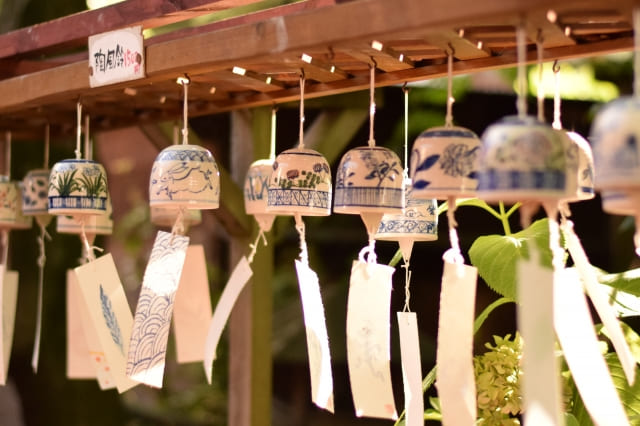
A Japanese wind bell is a small chime, usually made of glass, metal, or ceramic, that rings gently in the wind. They’re most commonly seen in summer, often hanging outside homes or temples.
What makes them unique is the way the sound influences your body. When you hear the sound of a wind bell, your brain automatically associates it with “wind” and “coolness.” This leads to a physiological reaction—your brain sends a signal to your peripheral nerves, which can lower your skin temperature. In short, just listening to wind bells may help you feel cooler on a hot summer day!
Interestingly, this cooling effect is said to occur more in Japanese people, as the sound of wind bells is a frequent part of their summer memories and experiences.

It’s fascinating that Japanese people actually feel cooler when they hear the sound of wind bells.
But honestly, it does make you feel refreshed, right?

I had no idea.
The Healing Power of Wind Bell Sounds
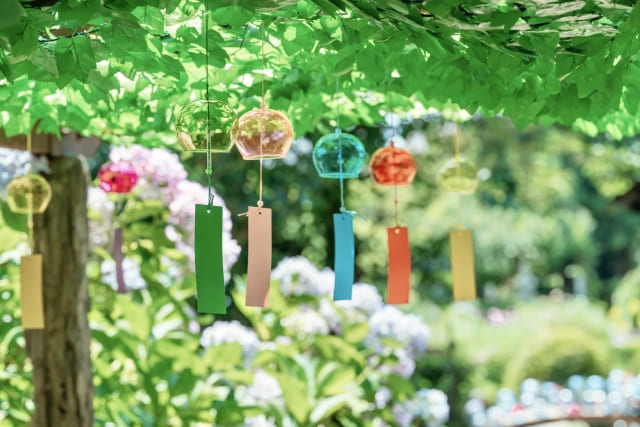
The sound of Japanese wind bells isn’t just pleasant—it’s actually healing. It contains high-frequency tones similar to birdsong or the babbling of a brook. These natural sounds are known to promote relaxation and reduce stress.
That’s why many people in Japan find peace and calm just by hearing a wind bell ring softly in the breeze.

Whenever I hear a wind bell, it reminds me of my grandparents’ house in the countryside—it’s such a comforting feeling.
The Origin: From Fortune-Telling to Protection
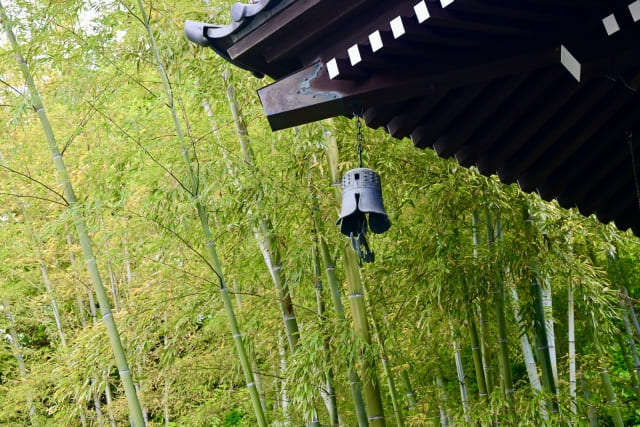
Japanese wind bells have an impressive 2,000-year history, with roots in ancient China. The original version was called a senfūtaku (占風鐸), a type of wind chime used to predict luck based on wind direction and sound, often hung in bamboo groves.
These chimes were brought to Japan by Buddhist monks around the Heian period (794–1185). Once in Japan, their use shifted from fortune-telling to warding off evil. Temples began to hang them from the four corners of buildings to protect the surrounding area from misfortune. People believed that anyone who could hear the chime’s sound would be kept safe from harm.

I had no idea wind bells used to be used as protection against evil spirits!
Eventually, nobles in the Heian and Kamakura periods began hanging wind bells in their homes for protection. By the Edo period (1603–1868), wind bells had become a popular household item to enjoy during the summer—celebrated for their refreshing sound. Over time, they also became smaller and more decorative.
Evolution of Wind Bells: From Bronze to Glass
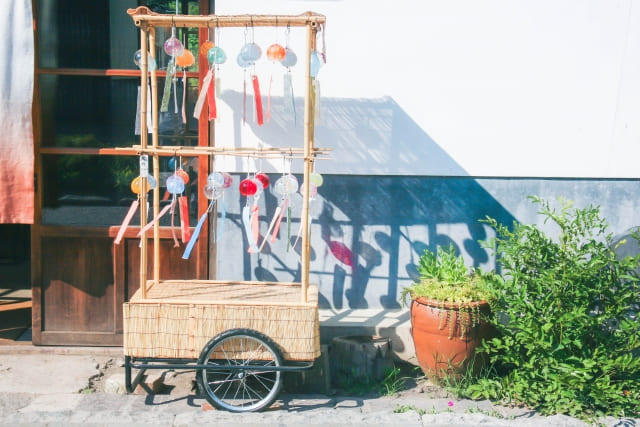
The earliest wind bells in Japan were made of bronze, just like the Chinese versions. But around the 1700s, glass wind bells began to appear, thanks to glass craftsmen in Nagasaki. These artisans traveled around Japan to showcase their work in cities like Osaka, Kyoto, and Edo (modern-day Tokyo), and glass wind bells quickly gained popularity.
In the Meiji period (1868–1912), street vendors known as “wind bell sellers” would walk around town selling these charming items during the summer months.
Three Famous Types of Japanese Wind Bells
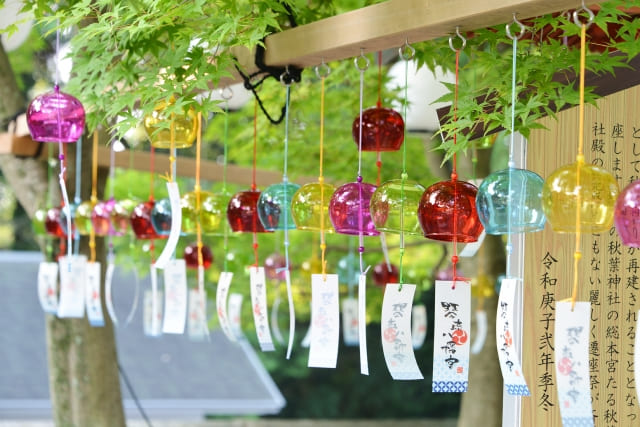
There are many types of wind bells in Japan, but here are three of the most well-known traditional styles:
1. Edo Wind Bells (Edo Fūrin)
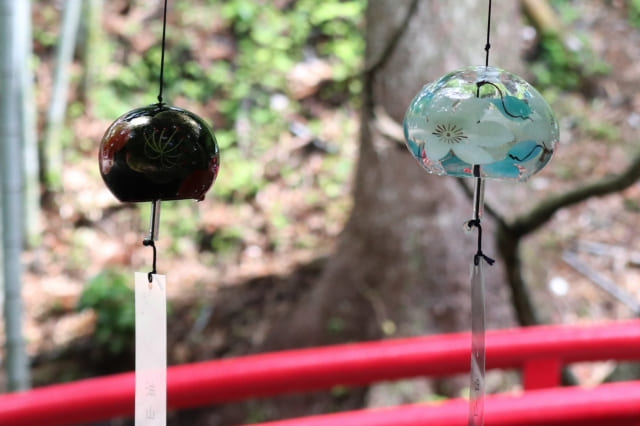
These glass wind bells come from Tokyo (formerly Edo). Each bell is made using the free-blown glass method (no molds), and every design is hand-painted by skilled artisans.

One unique feature is the jagged edge of the bell’s opening, which helps produce a light, clear “chirin-chirin” sound that feels dry and breezy—perfect for hot days.

Edo wind bells are so cute!
I love how adorable they look and sound.
2. Nambu Wind Bells (Nambu Fūrin)
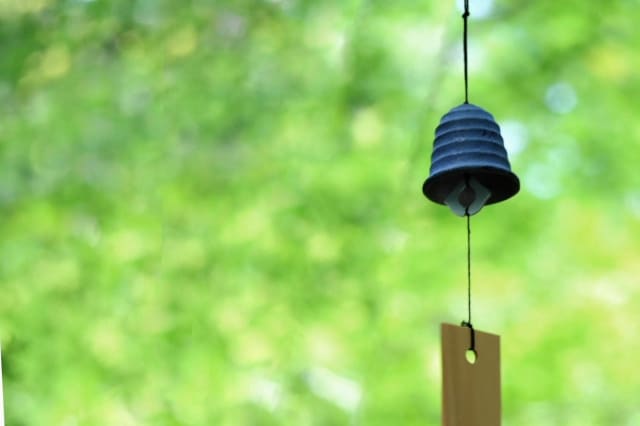
These are cast iron wind bells mainly produced in Iwate Prefecture, in northern Japan. They’re part of the Nambu Tekki metalwork tradition. Their sound is famous for being high-pitched, crisp, and long-lasting—like a clear “riiin” in the air. In fact, Nambu wind bells are recognized as one of the 100 Sounds to Preserve in Japan.

We also hang up a Nambu wind bell every summer.
The sound is just unbeatable—so clear and soothing.
3. Odawara Wind Bells (Odawara Fūrin)
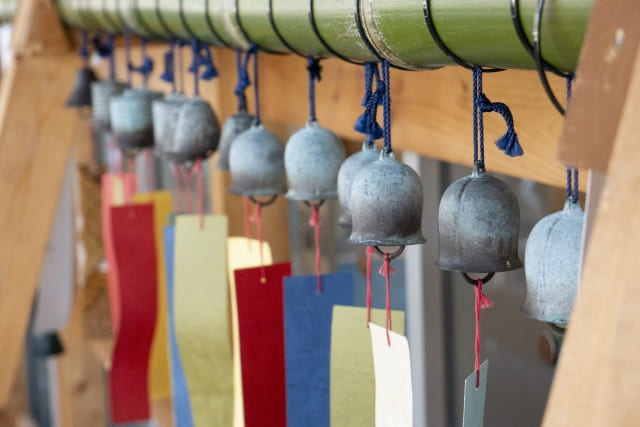
These bells come from Odawara, where metal casting has been a tradition since the Muromachi period (1336–1573). Made from a special brass blend, Odawara wind bells are known for their resonant, elegant tone and long echo. They’re a bit heavier but deeply soothing to listen to.
Frequently Asked Questions About Japanese Wind Bells
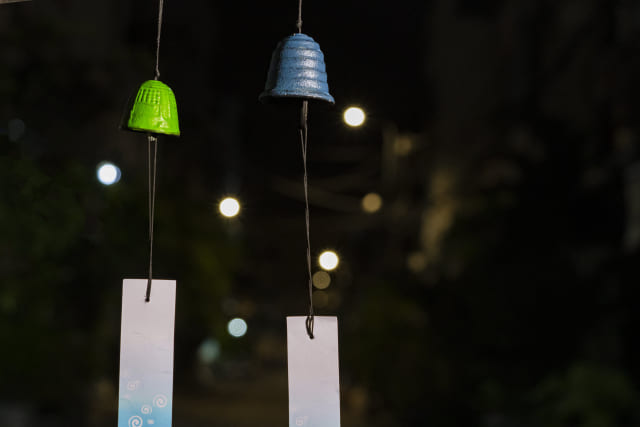
- QWhy are Japanese wind bells only used in summer?
- A
Japanese wind bells are most popular in summer because their light, crisp sound gives a mental sense of coolness. In the past, when air conditioning didn’t exist, people used the sound of wind bells to feel cooler during hot and humid months. Over time, the image of wind bells became strongly associated with summer in Japanese culture.
- QWhat are Japanese wind bells made of?
- A
Traditional Japanese wind bells are made from a variety of materials, including:
- Glass (Edo wind bells)
- Iron (Nambu wind bells)
- Brass (Odawara wind bells)
- Ceramic or pottery
Each material produces a slightly different sound and visual charm.
Conclusion: More Than Just a Pretty Sound
Japanese wind bells are much more than just cute decorations. They carry centuries of history, cultural meaning, and even health benefits. Whether protecting from evil spirits in ancient temples or simply bringing a breeze of calm on a hot summer day, these bells continue to charm people today.
So next time you visit Japan in summer, listen carefully. That soft chime floating through the air might just make the heat a little more bearable—and bring you a moment of peace.

If you are interested in Japanese culture, and you love gaming, you may love these games! Let’s play!

Yes! Let’s play!

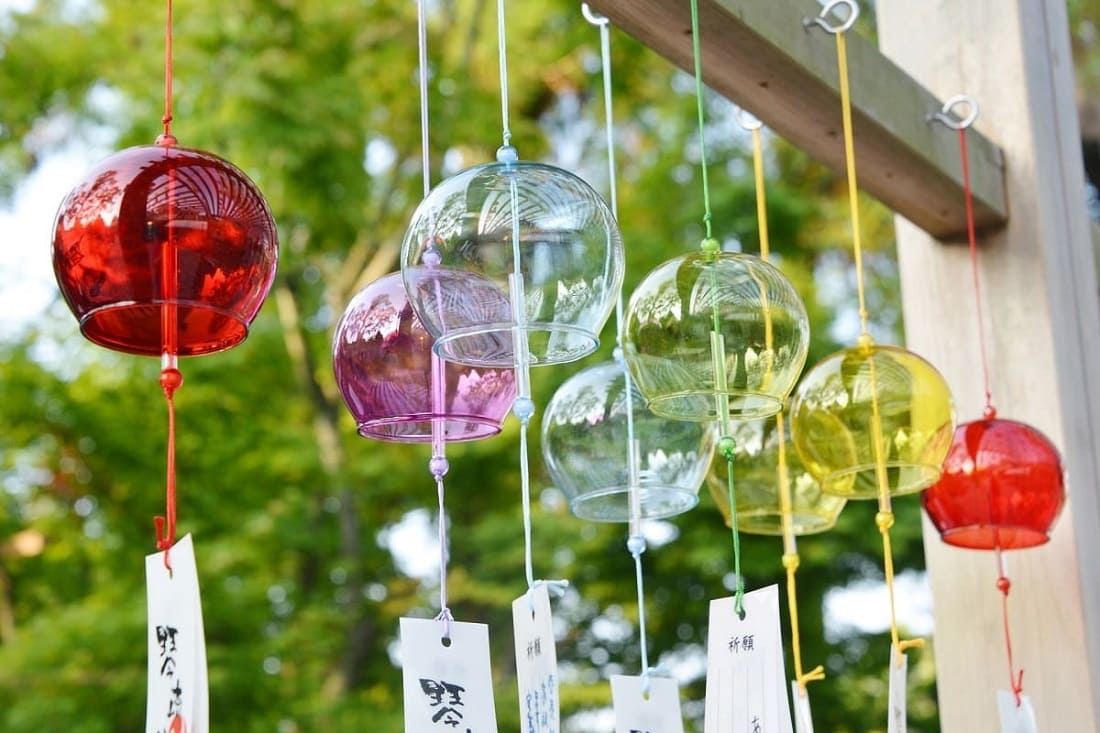




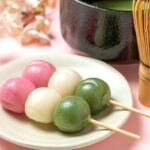

Comments